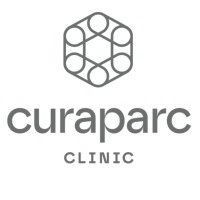Is robotics the savior in knee arthroplasty?
What are the benefits of robotics in knee arthroplasty today?

Knee arthroplasty has made enormous progress in the last few decades. The introduction of robotics and computer-assisted systems has revolutionized the way knee replacement surgeries are performed. But is robotics actually the savior in knee arthroplasty? In this blog, we will examine in detail the role of robotics in knee arthroplasty, examine its benefits and challenges, and answer the question of whether it can actually be considered a savior.
1. What is robotics in knee arthroplasty?
Definition and functionality
Robotics in knee arthroplasty refers to the use of robotic arms and computer-assisted systems to assist in the placement and alignment of knee prostheses. These technologies allow for more precise planning and execution of surgery, which can lead to better results.
Historical development
The first steps toward robotics in orthopedics were taken in the 1980s, but it has only been in the last two decades that the technology has made significant advances. Today, systems such as MAKO, ROSA and NAVIO are leaders in this field and are used in hospitals worldwide.
2. Possible advantages of robotics in knee arthroplasty
Precision and accuracy
In theory, one of the biggest advantages of robotics in knee arthroplasty is improved precision. Robot-assisted systems can make more precise cuts and placement, which is said to result in better alignment of the prosthesis and longer durability.
Individualized planning
Using 3D imaging and planning software, surgeons can create individual surgical plans tailored to each patient's specific anatomy. This is intended to increase the likelihood of a successful outcome.
Reduction of errors
Robotics is intended to minimize human errors that may occur during surgery. This is particularly important in complex operations where small deviations can have large consequences.
Faster recovery times
Patients who undergo robot-assisted knee arthroplasty could theoretically have shorter recovery times and regain mobility more quickly. This would be attributed to the more precise placement of the prosthesis.
Better long-term results
Thanks to improved precision and individualized planning, patients with robot-assisted knee replacements could theoretically have better long-term outcomes, less pain and a higher quality of life.
The theoretical advantages of robotics are currently offset by some disadvantages and open questions.
3. Challenges and risks of robotics in knee arthroplasty
High costs
One of the biggest challenges in implementing robotics in knee arthroplasty is the high cost. Robotic devices are expensive to purchase and maintain, and these costs are often passed on to patients.
Learning curve and training
Surgeons must complete special training to use the robot-assisted systems safely and effectively. This can take time and resources and requires ongoing training.
Technical failures
As with any technology, robotic systems are subject to the risk of technical failures. Such a failure during an operation can have serious consequences and therefore requires backup plans and manual intervention options. Surgeons should be able to achieve excellent results even without robots.
Not suitable for all patients
Not all patients are suitable candidates for robot-assisted knee arthroplasty. Factors such as the extent of joint damage, bone quality, and other health conditions must be considered.
4. Clinical studies and research results
Comparative studies
Several clinical studies have compared the results of robot-assisted knee replacements with those of traditional methods. These studies so far show that the robot-assisted procedures do not clearly lead to better alignment of the prosthesis and in no case to better functional results.
Long-term studies
Long-term studies are not yet available to evaluate the actual durability and long-term benefits of robot-assisted knee arthroplasty. Early results are not clearly convincing and further research is needed to draw definitive conclusions.
6. Future of robotics in knee arthroplasty
Further development of technology
The technology in the field of robotics is constantly evolving. Future innovations could enable even more precise and less invasive procedures. It remains unclear whether this actually leads to better results that justify the effort.
Integration of artificial intelligence
The integration of artificial intelligence (AI) into robotic-assisted systems could further improve preoperative planning and intraoperative navigation by providing real-time data and analysis.
Extension to other joints
While robotics is already widely used in knee arthroplasty, similar technologies could also be used more widely in other joints, such as the hip or shoulder, in the future.
7. Conclusion: Is robotics the savior in knee arthroplasty?
In summary, robotics in knee arthroplasty could theoretically offer numerous benefits, including improved precision, more personalized planning and better long-term outcomes, but these have not yet been demonstrated. Despite extremely high costs and technical complexity, current research and clinical experience do not yet show a decisive advantage. In the future, robotics could have the potential to permanently change the way knee replacement surgeries are performed. However, whether it can be considered a savior depends on further development of the technology, availability and accessibility for patients, and long-term outcomes.
MAKE AN APPOINTMENT?
You are welcome to make an appointment either by phone or online .



























